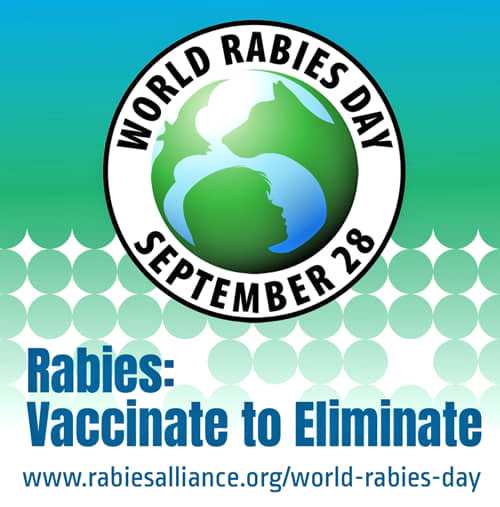Understanding Rabies: A deadly threat that can be prevented

Dr. Shalli & Dr. Sanjolly Gupta
Rabies, a viral disease that has haunted humanity for centuries, remains a significant public health concern around the world. Despite being almost entirely preventable, rabies continues to take lives, particularly in regions where access to vaccination and education is limited.
Every year on September 28th, people around the world observe World Rabies Day to remember Louis Pasteur, a French microbiologist who created the first rabies vaccine. The day was established to boost vaccination campaigns and raise awareness of the illness. It was established by the Global Alliance for Rabies Control (GARC) and the World Health Organization (WHO) has designated this day with the goal of increasing public awareness of the dangers of both human and animal rabies to public health and promoting the fight against this disease and reinforce awareness about its prevention. “All for 1, One Health for All” serves as the theme for this year. The theme highlights the need to implement an intersectoral and multidisciplinary approach with the contribution, intervention, and cooperation of professional teams from the human, animal, and environmental health sectors.
Rabies is caused by the rabies virus, a member of the Lyssavirus genus. It primarily affects mammals, including humans, and is typically transmitted through the saliva of infected animals, most commonly through bites. Once the virus enters the body, it travels along the nervous system toward the brain, where it causes severe inflammation and, ultimately, death. According to the World Health Organization (WHO), rabies still claims tens of thousands of lives each year, with an estimated 59,000 human deaths annually, primarily in developing countries. Thevast majority of these deaths are attributed to dog-mediated rabies transmission.
Symptoms
All warm-blooded hosts are affected by the acute encephalitis brought on by the rabies virus, which almost always results in death. Lethargy, fever, vomiting, and anorexia are a few examples of the non-specific early signs of rabies. Within days, symptoms progress to deviant behavior, hostility, and/or self-mutilation, as well as cerebral dysfunction, cranial nerve dysfunction, ataxia, weakness, paralysis, convulsions, and difficulties breathing and swallowing.
Once clinical symptoms appear, rabies is almost universally fatal, underscoring the critical importance of prevention and immediate medical attention for potential exposures.
Transmission and Risk Factors
While dogs are the primary carriers of rabies in many parts of the world, various wild animals, such as bats, raccoons, and foxes, can also transmit the virus. Human infections primarily occur through bites, but in rare cases, exposure to infected saliva through mucous membranes or broken skin can lead to transmission.
Prevention and Control
The most effective way to combat rabies is through prevention. This includes:
Post-Exposure Prophylaxis (PEP): Immediate administration of PEP, which includes a series of rabies vaccinations and rabies immune globulin, can prevent the onset of clinical symptoms if administered promptly after exposure.
Education and Awareness: Raising public awareness about rabies risks, prevention measures, and the importance of seeking medical attention after potential exposures is vital.
For Pets: Routine vaccination of pets and domestic animals is crucial. Additionally, vaccination campaigns in wildlife populations can help break the transmission cycle. Vaccination should be done at 3 months of age and thereafter, booster dose should be given every year.
How important is dog vaccination?
Dogs are the main source of human rabies deaths and vaccinating them is essential to controlling the disease.
Global Efforts and Progress
International organizations, including the World Health Organization (WHO) and the World Organisation for Animal Health (OIE), are working towards the goal of zero human deaths from dog-mediated rabies by 2030. Mass vaccination campaigns, improved access to PEP, and community education initiatives have led to significant reductions in rabies cases in some regions.
Conclusion
Rabies remains a global health threat, but with concerted efforts, it is a disease that can be controlled and eventually eradicated. Education, vaccination, and timely medical intervention are the cornerstones of rabies prevention. By continuing to prioritize these strategies and working together with other health professionals and community members, we can achieve the goal of “All for 1, One Health for all” and move closer to a world where rabies is no longer a deadly menace to humans and animals alike.
(The writer Dr. Shalli is Assistant Professor, Community Medicine, AIIMS Vijaypur, Jammu and Dr. Sanjolly Gupta is Ph.D, Veterinary Public Health and Epidemiology).
